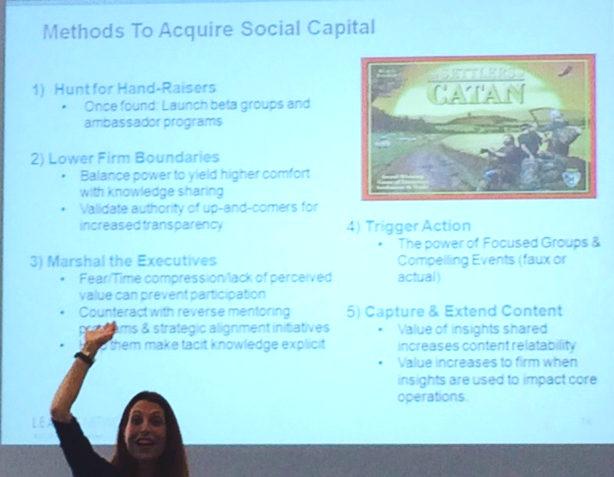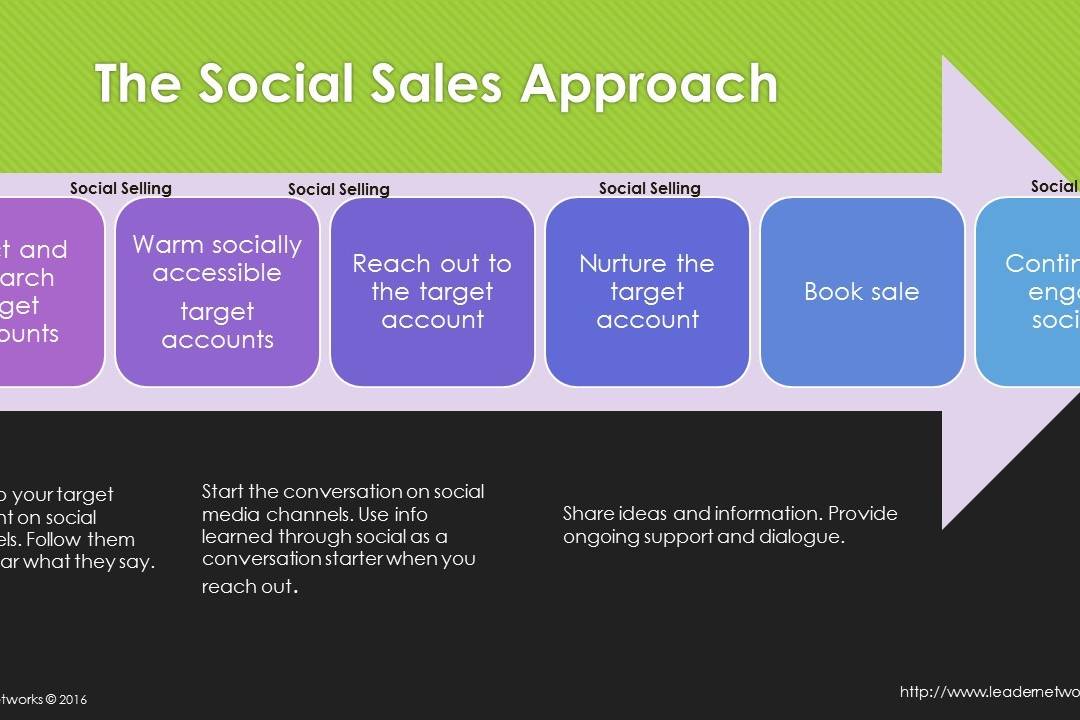I’ve been a little quiet on the blog lately because I have been busy with clients and giving talks – lecturing on social selling at Cisco’s Partner Summit to teaching about knowledge management at Columbia’s IKNS program (see photo above) and a few other stops along the way. While each venue had a different focus, the common theme across them all is that to succeed using social channels, one needs to be intentionally focused on relationship building. The strength of your relationships – the trust you build on and offline – translates into your strategic value. Your social capital becomes your ability to retain customers, attract and keep staff, and win new business.
And yet despite all the strategic planning most firms to progress or grow sales, marketing, and operations, they forgo including their digital footprint. The trend that we are seeing especially with mid to large sized organizations is that… social business activities at some firms aren’t aligned … With anything! For those firms, “doing” is all that counts. And a digital muddle is the result. Defining the audience, matching social business methods and messaging to the audience, creating compelling content for engagement and measuring success — all of these are part of the doing. But if these efforts do not advance the firm’s strategic goals? Wasted time, effort and investment are the only real outcomes.
(Social) business strategy means starting with the end in mind. To bring the firms brand story to life it is necessary to think through a fully integrated and integrative approach. Social business should be an electronic version of your firms identify, thought leadership, relationships and value drivers. This requires looking at social business as more than just marketing campaigns or a portfolio of social media accounts. Rather, it needed to offer a digital representation of the firm’s identity and how it relates to the world. And to get there, one needs stop thinking about social as pushing out content, grubbing for followers, searching for sensational images. Instead, go back to business basics. Ask the hard questions and tap into the ways that social business can begin or extend their relationships to build social capital. Before planning your approach, be sure to know your organization’s direction and goals.
- Who are key audiences the firm seeks to deepen relationships with– in broad terms — and their initial relationship to your company? For example, who are the key buyer profiles? Is the firm seeking an acquisition or a sale in the coming year, seeking to raise their visibility with analysts and journalists, attract prospective staff to support a hiring boom? Who you want to connect with will shape the content and connections you make online.
- What do you want to happen with that audience — what change in that relationship are you trying to create?
- What kinds of interactions might help move that audience towards this new relationship?
- What will it take to create those kinds of interactions?
- What do you hope to learn from listening and interacting with your audience?
That’s the strategic part. Now take a cold, hard look at your current social business activities. Do they:
Match your strategic direction? For example, how strong is your online community’s outcomes in support of your audience needs? Are your social media efforts joined up, representative of the conversations you want to have with your audiences? Are they interactive and bi-directional? And, quite simply, do they mirror the audience experience you have strategically intended to have?
Deliver results which meet actual business goals, not just social metrics? Do you track and report business impact of your social business initiatives in meaningful ways? Can you tell the story of how your work on social helped progress the business? What additional things do you know about your audience due to your social interactions?
Build relationships with audience members who are important to your firm’s strategic direction and goals? And if so, how do you know?
Engage audience members AND your internal constituencies in collaborations which benefit both groups? Does everyone win because of you social programs?
Deliver greater impact over time for each dollar expended? Not just in terms of cost cutting, but in real, measurable financial outcomes? How has social business progressed innovation or ideation at your firm? How did social business deliver sustainable impact to the top line?
If your social business activities meet the criteria above — Congratulations! You have achieved social business success based on delivering /business/ results. If not … consider these approaches:
Know where you are going and why. Make sure you really understand your firm’s strategic direction and business goals. It’s all too easy to lose sight of goals, lose direction and end up doing social in circles with no results. Also, document it, socialize the plan, gather feedback… and skin in the game from leaders across the organization.
Be efficient and effective. Take a hard look at the “doing” you are doing. What parts are working against the above criteria? What parts are not? Where is the scale? Keep the first, dump the rest.
Less is more. When it comes to audience definition, it’s all too easy to be sucked into a numbers game. Forget that. Focus on identifying the MOST important audience segments, the MOST desirable prospects, the MOST active customers, the MOST influential industry partners and observers.
Then tailor your social tools and messages to reach them where they are.
Communicate real information and ideas. If your content is noise, no one cares. If you are conducting a digital monologue, just like in the real-world, your listeners will flee. If it is clear, instructive, entertaining, enlightening, thought-provoking and compelling — or any combination of these — you will be serving your audience members’ needs.
Remember to be human. Your firm’s products and services are considered, purchased and used by people, not webbots. In the end, social business tools and techniques are just a virtual extension of our flesh-and-blood social selves. Build relationships, not campaigns.
Warning: Attempt to read property "base" on array in /home3/trusten9/public_html/leadernetworks/wp-content/plugins/wp-user-profile-avatar/shortcodes/wp-user-profile-avatar-shortcodes.php on line 665
Warning: Attempt to read property "base" on array in /home3/trusten9/public_html/leadernetworks/wp-content/plugins/wp-user-profile-avatar/shortcodes/wp-user-profile-avatar-shortcodes.php on line 665
Warning: Attempt to read property "base" on array in /home3/trusten9/public_html/leadernetworks/wp-content/plugins/wp-user-profile-avatar/shortcodes/wp-user-profile-avatar-shortcodes.php on line 665
Warning: Attempt to read property "base" on array in /home3/trusten9/public_html/leadernetworks/wp-content/plugins/wp-user-profile-avatar/shortcodes/wp-user-profile-avatar-shortcodes.php on line 665
Vanessa DiMauro
Internationally recognized independent thought leader on social business strategy and operations with a specialty in online community. I help organizations drive top line growth through innovative digital strategy design and thoughtful execution. I have successfully led 60+ strategic social business initiatives for the world's most influential organizations over my 20 years as a social business executive and serve on a number of boards. My award-winning track-record is fueled by passion, experience and research.
My work has been covered by leading publications such as the New York Times, the Wall Street Journal and CIO Magazine and was recently named a Social Marketing Master by Forbes. As a former Executive in Residence at Babson College, Olin School of Management, I am an engaging and informational educator and keynote speaker.
Related Posts
January 27, 2017
What does customer intimacy really look like?
Our events were unique because they delivered something our customers couldn’t…
April 18, 2016
Social Selling – Let’s Get a Few Things Straight
The first step to becoming an effective social seller is to understand that…



